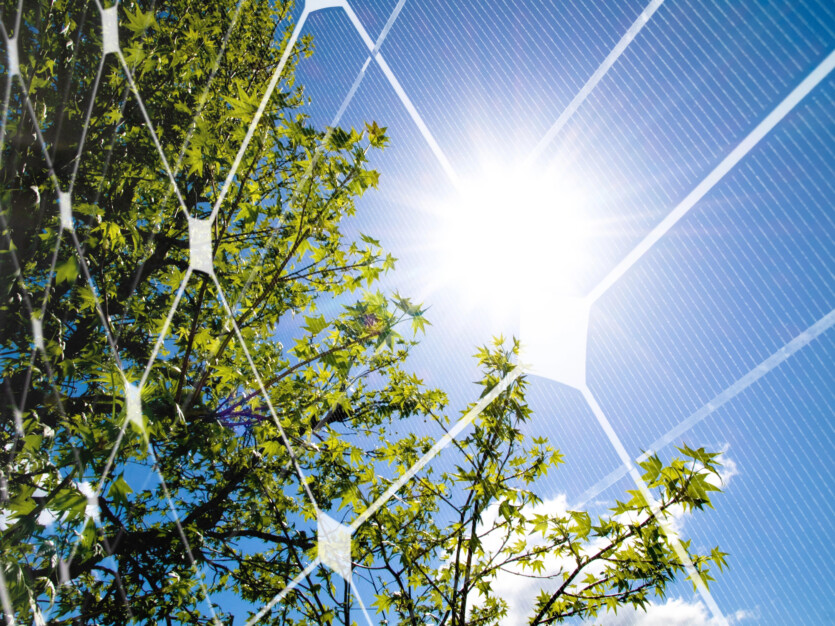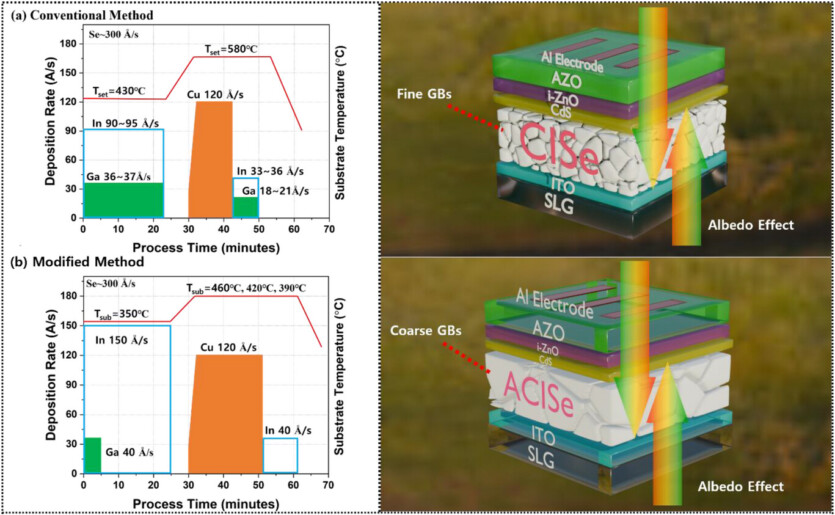
South Korean researchers from The Kangbuk Institute of Science and Technology in Daegu has created double-sided thin-film solar cells made of copper, indium and selenium, which collect sunlight not only from the front but also from the back.
The technology can be realized at relatively low temperatures, which simplifies the technological process and allows for the wide application of similar solar cells in the panels, these can be installed indoors, on farms, or in tandem with other types of solar cells. Bifacial solar cells have recently attracted wide attention because they are able to absorb light from both sides simultaneously.
To create such cells, transparent electrode substrates are used that transmit light. However, when manufacturing thin-film solar cells on transparent electrodes with low thermal stability, it has been difficult to achieve the required characteristics because high temperatures are required to manufacture thin-film cells.

A research team led by Dehwang Kim and Shijun Sohn from the Department of Energy and Environmental Technology Kangbuk Institute of Science and Technology has successfully developed a thin-film solar cell technology that operates efficiently at temperatures below 420°C with a narrow bandgap. To form the CuInSe mixture2 silver was added. This allowed for higher quality precipitation of the compound at lower temperatures.
It also increased the efficiency of the solar cells by creating a gallium gradient in the lower part of the CuInSe layer2. The charge transfer and recombination characteristics were improved. The results showed that thin-film solar cells with a narrow gap on transparent substrates achieved performance indicators 15.3% — front side, 8.44% — back side. They also demonstrated high efficiency in bilateral performance measurements with a specific power generation density (BPGD) of 23.1 mW/cm².
«This study opens up a new opportunity to improve the efficiency of thin-film solar cells based on transparent substrates. We will continue to expand the scope of the highly efficient bifacial solar cell technology based on transparent substrates», — said Daehwan Kim and Shijun Song.
The results of the study are published in the journal Advanced Energy Materials
Source: TechXplore

Spelling error report
The following text will be sent to our editors: